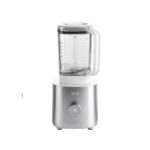Lovely is an adjective used to describe something pleasing or attractive. While grammar rules suggest “lovelier” and “loveliest” as the comparative and superlative forms, native English speakers often use “more lovely” and “most lovely.” This article explores the reasoning behind both forms and provides clarity on their usage.
Understanding Comparative and Superlative Adjectives
Comparative adjectives compare two things, while superlative adjectives compare three or more. They indicate degrees of a quality. For example:
- Base: big
- Comparative: bigger (comparing two)
- Superlative: biggest (comparing three or more)
The Case of “Lovely”
The traditional rule for forming comparatives and superlatives of two-syllable adjectives ending in ‘y’ involves changing the ‘y’ to ‘i’ and adding ‘-er’ or ‘-est’. This rule applies to words like “happy” (happier, happiest). Therefore, by this rule, “lovely” becomes “lovelier” and “loveliest.”
However, a common practice among native speakers is to use “more lovely” and “most lovely.” This stems from a tendency to use “more” and “most” with longer adjectives, even if they have two syllables. This feels more natural and less awkward in spoken English.
Which Form is Correct?
Both “lovelier/loveliest” and “more/most lovely” are considered acceptable. Language evolves through usage, and the prevalence of “more/most lovely” in everyday conversation legitimizes its use. While “lovelier” and “loveliest” adhere to traditional grammar rules, they might sound slightly formal or outdated in certain contexts.
Choosing the Right Form
Ultimately, the best form depends on the context. In formal writing or academic settings, “lovelier” and “loveliest” might be preferred. In casual conversation or informal writing, “more lovely” and “most lovely” are perfectly acceptable. Understanding your audience and the tone of your communication will guide your choice.
Examples of Usage:
- Formal: “The countryside was lovelier than she remembered.”
- Informal: “This dress is more lovely than the other one.”
- Formal: “She had the loveliest smile.”
- Informal: “That was the most lovely sunset I’ve ever seen.”
Conclusion
While grammar rules provide a framework, language is fluid and adaptable. Both “lovelier/loveliest” and “more/most lovely” effectively communicate the comparative and superlative degrees of “lovely.” The choice between them depends on context and personal preference. Understanding the nuances of both forms allows for more effective communication.
